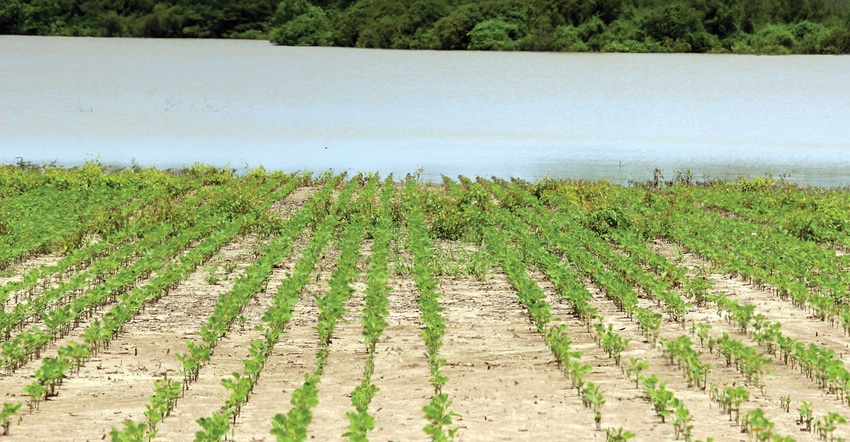
Few things are as important to soybean yield as planting early and achieving a final stand count close to 75,000 plants per-acre.
A three-year study compared state university recommendations against a more expensive "kitchen sink" high input treatment regime to see if higher inputs would compensate for low plant populations. High inputs delivered only a 4 bushel per-acre increase.
"The high inputs cost about $117 an acre," says Jeremy Ross, Extension agronomist, University of Arkansas System of Agriculture, speaking at the recent Tri-State Soybean Forum in Dumas, Ark. "Soybean prices during this study hovered around $10. That extra 4 bushels of yield times $10 gives me an additional $40 per-acre, so the $117 in inputs did not deliver an economic benefit."
To achieve 99% of maximum yield using the university recommendations required just over 131,000 seeds per acre. "To get maximum yield with the high input system, you would need 115,000 plant stands per-acre," Ross says.
"An important finding in this study was there were no interactions between plant populations and management schemes. Even if you spend the extra money for expensive inputs, your yields may increase, but that yield will not compensate for the cost of those inputs."
Maturity groups
Researchers took that kitchen sink study and looked at maturity groups with and without fungicide/insecticide seed treatments in different growing environments and varying stand counts.
"We found a minimum stand count of 75,000 plants per acre can maximize yield, but those stands need to be uniform with no skips," Ross says. "The results also showed it's better to keep a minimum stand count late in the growing season. Filling in gaps in plant stands did not significantly increase yields."
Ross wanted to see if there was a breakeven point without the seed treatments and how much extra seed was needed to compensate and obtain a comparable yield.
"When we used the seed treatments for early season protection in lower plant populations, we got better stands but didn't see a yield increase," Ross says. "Once we reached a 100,000 to 125,000 seeding rate, we didn't see a yield difference with or without the seed treatments."
Replanting
To determine when replanting is warranted in-season, Ross planted three trials covering the typical soybean planting window in Arkansas, mid-April, mid-May, and mid-June, at a sub-optimal seeding rate of 50,000 seeds.
Two weeks later he added 100,000 seeds to the plots, and also planted plots with seed counts ranging from 50,000 to 150,000 seeds in that same planting window. "As long as we got a decent stand, I didn't see a big yield difference. Soybeans can compensate if you plant them early enough," Ross says. "Early in the season, around that May 1 timing, yields were consistent across the various seeding rates."
Things changed with a mid-May planting date. "We started to see a yield increase when stands increased in the 75,000 to 150,000 range," Ross says. "If you get to mid-May, as long as a grower has a final stand count around 75,000, my advice is to not replant. Just make sure your plant population is uniform or weed pressure could increase and irrigation efficiency will suffer."
About the Author(s)
You May Also Like




